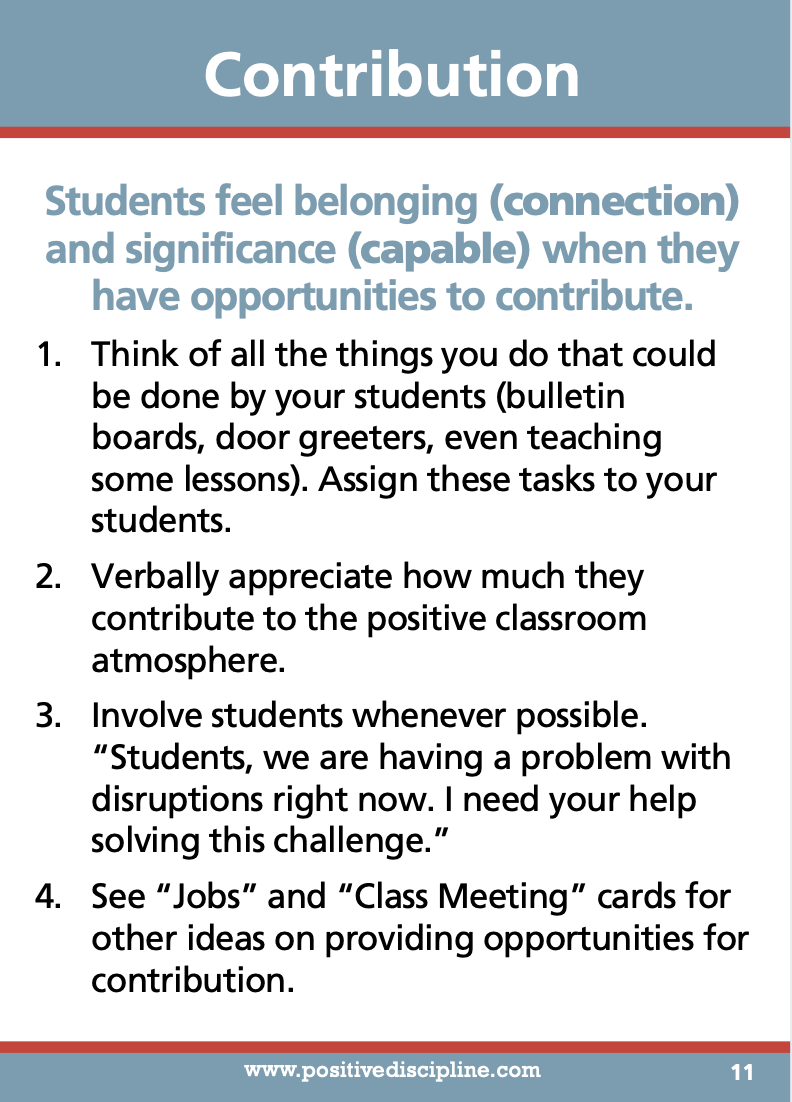Positive Discipline Tool Card: Contribution
- BeckyD
- Dec 15, 2024
- 2 min read
Positive Discipline Teacher's Tool Cards by Jane Nelsen and Kelly Gfroerer and Positive Discipline Parenting Tool Cards by Jane Nelsen and Adrian Garsia, each offer 52 Positive Discipline tools available to help with many teaching and parenting challenges. Contribution, is the highlighted tool in this blog post from the Teacher's Tool Cards, and Empower Your Child is the closest equivalent card from the Parenting Tool Cards.
After trying out one of these tools with the children in your life, please share a story of your success or struggle with it. Thank you! The more you apply the Positive Discipline teaching and parenting tools, the more they will become a part of your lifestyle. Practice makes better!
Teachers
Story -
Alfred Adler, a 19th-century Viennese psychiatrist, created the Individual Psychology concepts that Positive Discipline is based upon. Adler believed that contribution promoted a sense of belonging and significance and affected a person's overall mental health.
5th-grade student Henry kept getting out of his seat during quiet class work time. Having already talked to Henry a few times, Mr. Pettit decided to give him a job to keep him engaged and give him the significance he felt Henry lacked that day.
The next day, Mr. Pettit noticed Henry seemed more connected and respectful toward him and the other students. Contribution was what Henry had been lacking, and Mr. Pettit supported Henry to contribute more so he could experience more belonging and significance in the classroom.
Parents

Story -
Empowering Your Kids doesn't mean letting the kids run the household - parents are the leaders. What empowering your kids means is every person needs a sense of personal power, and we want to help our children find that in a positive way.
15-year-old Jessica accidentally broke a window in her house when she was throwing things at her brother, who had been teasing her mercilessly about her appearance. Her mother came rushing in upon hearing the noise and said she needed time to calm down, and then she'd come back in 15 minutes to have a discussion with both of them about what had happened.
In the meantime she wanted the two to take a break away from each other.
When the 15 minutes were up, the three had a discussion and then brainstormed possible solutions. This allowed Jessica to step up and admit she had accidentally broken the window. They decided her brother (17 years old) would use his Internet researching skills to help find a window replacement option and, with his mom's help, call to get estimates. Jessica would have a portion of her allowance withheld each week and do extra jobs around the house to earn money for the window replacement.
The two children learned about alternatives to their behavior next time (walk away when someone is being unkind instead of throwing things; instead of being unkind through "teasing," find positive ways to amuse yourself.) Going through this problem-solving process showed them that they're capable of coming up with solutions to problems.
====================================================================
Where can you purchase these tool card decks? The card decks are available at www.positivediscipline.com (Select products, then select tool cards), and versions are available for iPhone and Android in the App stores on the phones.










Comments